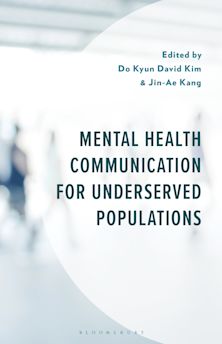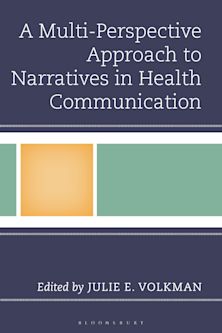Inspection copy added to basket
This title is available for inspection copy requests.
Please note our inspection copies are only available in ebook format, and are fulfilled by VitalSource™. If an ebook isn’t available, please visit our inspection copy page for more information.
Buy from Bloomsbury eTextBooks
You are now leaving the Bloomsbury Publishing website. Your eBook purchase will be with our partner https://www.vitalsource.com.
Your credit card statement will show this purchase originating from VitalSource Technologies. They will also provide any technical assistance you might require.
You must sign in to add this item to your wishlist. Please sign in or create an account
Description
Dosage: A Guiding Principle for Health Communicators uses “dosage” as a metaphor to help all healthcare professionals apply basic communication principles to their work.
After a general overview of communication and its paramount importance in the health care setting, J. David Johnson, a professor of communications and former media research analyst for the U.S. Information Agency and author of five previous books, outlines the best practices for
Interpersonal communication in health care relationships, including that between physician and patient. He answers questions such as “How Much Do I Reveal and When?”;Interprofessional teams, including teamwork, interdependence, stress and burnout, and communication in decision-making;Mass Media, including searching for information and gaps in knowledge;Knowledge diffusion and dissemination;Change in communication, including social media;Health information technology and how to handle the flood of communications we receive today.
Johnson effectively expands his metaphor of dosage, detailing its many elements (amount, frequency, delivery system, sequencing, interaction with what other agents, and contraindications) as well as discussing the use and limits of metaphor generally. He explicitly addresses the following contexts: interpersonal communication, with a focusing on health professional-client interactions; inter-professional teams; mass media that are increasingly important for broader approaches to public health; how change is adopted and implemented within health care organizations and individuals; and the new technologies for health communication.
The book’s final chapter turns to broader policy issues raised by application of the metaphor of dosage as well as detailing its implications for methods of communication research. It concludes with a discussion of how dosage can serve as a bridging metaphor to close the gap between researchers and practitioners which is fundamental to clinical and translational science.
Table of Contents
Chapter 1: Introduction and Overview
Chapter 2: Definition and the Use of Metaphor
Chapter 3: Interpersonal
Chapter 4: Interprofessional Teams
Chapter 5: Mass Media
Chapter 6: Diffusion and Dissemination
Chapter 7: Change
Chapter 8: Health Information Technology
Chapter 9: Summing Up
References
Product details
| Published | 12 Sep 2013 |
|---|---|
| Format | Ebook (Epub & Mobi) |
| Edition | 1st |
| Extent | 200 |
| ISBN | 9781442221260 |
| Imprint | Rowman & Littlefield Publishers |
| Publisher | Bloomsbury Publishing |
About the contributors
Reviews
-
Dosage is an important reframing of how we think about the challenges of communicating about health. Johnson thoughtfully uses the metaphor of pharmacological dose and demonstrates its applicability across a range of contexts, from the doctor breaking bad news to a patient, to distributed teams seeking to coordinate activity, to health promotion campaigns for behavior change. Health communicators -- whether marketing professionals, nurses and social workers, marketing practitioners, or social media bloggers -- can easily pick up lessons here from a wealth of scholarship about message development, channel selection, timing and frequency, and how to avoid the negative consequences of too much communication about a health issue. Here is a top-flight scholar offering us a new way to re-vision the challenges of professional communication.
James W. Dearing, Michigan State University
-
This textbook is long overdue and unprecedented in the social scientific literature. The question of how much is enough is seldom addressed in research and Johnson's book takes a critical and empirically-based examination of this question in health communication.
Thomas Feeley, Professor and Chair of Communication, University at Buffalo, The State University of New York
-
Citing a dearth of information available to the physician for guidance in imparting medical information to patients, Johnson presents the "dosage metaphor." With a focus on amount, frequency, sequencing, delivery system, interaction with other agents, and contraindications he provides answers to fundamental problems that all health communicators face. There are nine chapters: introduction and overview; definition and the use of metaphor; interpersonal communication; inter-professional teams; mass media; diffusion and dissemination; change; health information technology; and final analysis. Inter alia, he describes communication campaigns, new health information technologies, social media, the wisdom of crowds, and discusses the policy issues raised by the dosage metaphor. This concise and interesting book is for doctors, nurses, social workers, and marketers. There are figures, tables boxes, and a bibliography.
Book News, Inc.



































